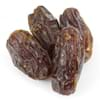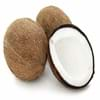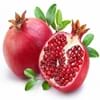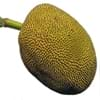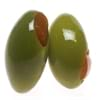Health Benefits
Cancer prevention, Diarrhea treatment, Muscle pain relief, Piles treatment, Prevents constipation, Skin cleansing, Ulcer treatment
Cancer prevention, Supports healthy Liver function, Diarrhea treatment, Heart care, Increases metabolic rate, Neutralizes irritable bowel syndrome, Helps Prevent cataract, Prevents constipation, Prevents gall stones, Prevents high blood pressure, Helps prevent Parkinson's disease, Reduces risk of asthma, Treatment of alzheimer's disease
General Benefits
Controls blood pressure, Digestive aid, Maintains healthy cholesterol level, Strengthens bones
Boosts immune system, Helps in weight loss, Maintains healthy cholesterol level, Whitens teeth
Skin Benefits
Anti-aging benefits, Hydrates skin, Skin rejuvenation
Anti-aging benefits, Brightens and lightens complexion, Hydrates skin, Treatment of acne, Treatment of dark spots, Treatment of puffy eyes
Hair Benefits
Prevents hair loss, Shiny hair, Softening mask
Prevents hair loss, Promotes longer and healthier hair, Regulates hair growth, Treatment of dandruff
Allergy Symptoms
Abdominal pains, Decrease in blood pressure, Dizziness, Hives, Itching of mouth, Lightheadedness, Swelling, Swelling of mouth, tongue or lips, Weak or racing pulse, Wheezing
Abdominal pains, Itching, Swelling of mouth, tongue or lips, Vomiting
Side Effects
Headache, Intense headache, Tooth decay
Allergic reaction, May consist of poisonous seeds
Best Time to Eat
As a snack in the late afternoon, Don't consume at night and before bed, Eat the fresh ones, avoid mixing with any other foods, don't eat after meal.
Any time except an hour after meal, Best if taken as a breakfast (or empty stomach), Don't consume at night and before bed
Vitamin B5 (Pantothenic Acid)
Vitamin C (Ascorbic Acid)
Vitamin K (Phyllochinone)
Calories in Fresh Fruit with Peel
Calories in Fresh Fruit without Peel
Type
Berry, Tropical
Tree fruit
Season
All seasons
All seasons
Varieties
Cavendish Bananas, Lady Finger Bananas, Pisang Raja, Williams Bananas and Cooking Bananas
Red Delicious, Golden Delicious, Gala, Fuji, Granny Smith, Arkansas Black, Sampion, Pink Lady, Cameo, Jonagold, Mc Intosh, Ananasrenette, Lobo, Pacific Rose, Yellow transparent and Bramley
Color
Green, Yellow
Green, Red, Yellow
Shape
Curving Cylinder
Round
Taste
Sweet
Sweet, Sweet-Sour
Origin
Papua New Guinea
Central Asia, Middle East Asia
Soil Type
Well-drained
Loam
Climatic Conditions
Warm
Cold
Facts about
- As bananas contain potassium-40 which is radioactive isotope of potassium, bananas are radioactive.
- Bananas float in water.
- There are around 1000 varieties of bananas.
- Eating this fruit will cheer you up.
- Apples can be as small as a pea and as big as a pumpkin.
- There are more than 8000 varieties of apples.
- Life of an Apple tree can be more than 100 years.
- Apples contain 25% air, therefore they float in water.
Other Countries
Brazil, Cameroon, China, Colombia, Ecuador, Ghana, Indonesia, Philippines, Uganda
Chile, France, India, Iran, Italy, Poland, Russia, Turkey, United States of America
Top Importer
Europe
Russia
Top Exporter
Ecuador
China
Botanical Name
Musa acuminata and Musa balbisiana
Malus Domestica
Synonym
Musa × dacca , Musa × sapidisiaca , Musa × sapientum
Malus Communis or Malus Pumila or Pyrus Malus
Subkingdom
Tracheobionta
Tracheobionta
Division
Magnoliophyta
Magnoliophyta
Class
Liliopsida
Magnoliopsida
Subclass
Liliidae
Rosidae
Order
Zingiberales
Rosales
Species
M. acuminata , M. balbisiana
M. domestica
Generic Group
Banana
Rose
Compare Banana and Apple
It is important compare Banana and Apple as both the fruits have a different nutritional value. Their comparison can be done on the basis of their vitamin and mineral content, calories, benefits as well as characteristics, making it easier for us to choose the best fruit for our diet. Their general health benefits are as follows:
Banana Benefits: controls blood pressure, digestive aid, maintains healthy cholesterol level and strengthens bones.
Apple Benefits: boosts immune system, helps in weight loss, maintains healthy cholesterol level and whitens teeth.
Fruits are also used as a remedy for various hair problems. The hair benefits of Banana are: prevents hair loss, shiny hair and softening mask and hair benefits of Apple are: prevents hair loss, promotes longer and healthier hair, regulates hair growth and treatment of dandruff. Some fruits are known to cause allergic reactions. The allergy symptoms of first fruit are: abdominal pains, decrease in blood pressure, dizziness, hives, itching of mouth, lightheadedness, swelling, swelling of mouth, tongue or lips, weak or racing pulse and wheezing and the symptoms of second fruit are: abdominal pains, itching, swelling of mouth tongue or lips and vomiting. Get sorted Banana vs Apple comparison with the help of fruit comparison tool by fruitvs.com.



